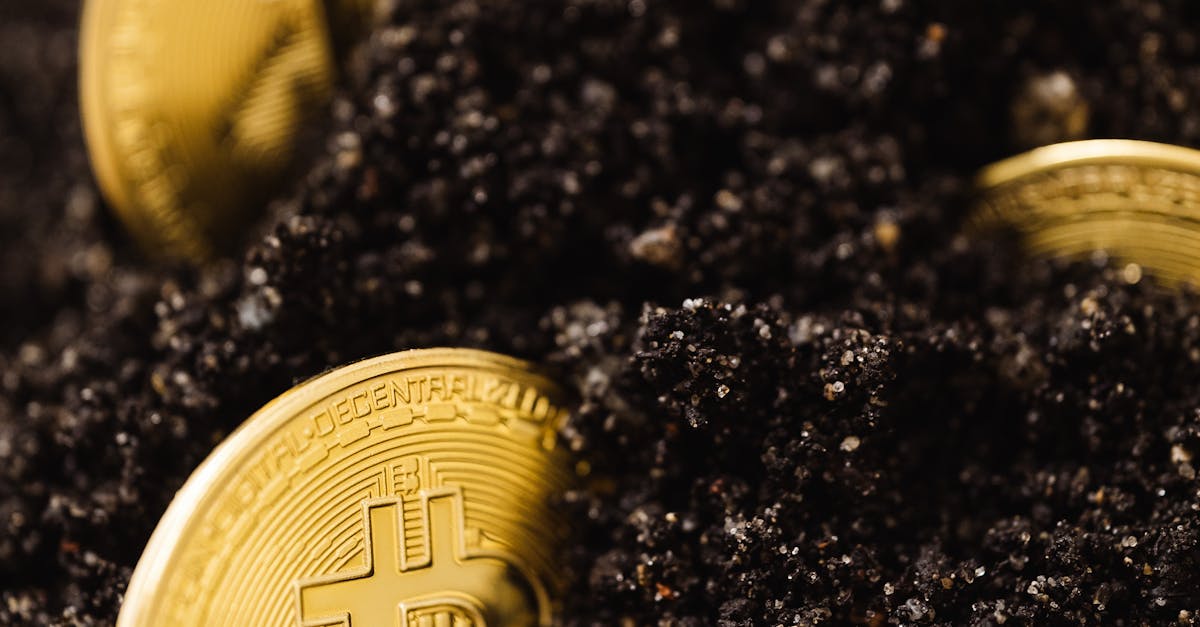Unveiling the Future of Gold Mining: Sustainability through Innovation

An Urgent Shift: Embracing Sustainability in the Gold Industry
Gold, a timeless symbol of wealth and beauty, has been sought after for centuries. Yet, traditional mining practices have often come at a high environmental cost. Recognizing this urgent need for change, the gold industry is undergoing a transformative shift, embracing cutting-edge technologies that pave the way for a sustainable future. This comprehensive article will delve into the innovative solutions that are revolutionizing the industry, unlocking a brighter path forward.
Pioneering Technologies: A Glimpse into the Future
At the forefront of this transformation lie a suite of groundbreaking technologies that are reshaping every aspect of gold mining. Biomining harnesses the power of microorganisms to extract gold, significantly reducing environmental footprints. Nanotechnology empowers the design of nano-sized tools for precise mineral separation and recovery. Drones, remote sensing, and machine learning enhance exploration and monitoring capabilities, optimizing efficiency and safety. By embracing these innovations, the gold industry is not only securing its long-term sustainability but also unlocking new avenues for growth and prosperity.
Key Insights
5 Key Points
- The gold mining industry is facing increasing pressure to adopt sustainable practices.
- Innovative technologies, such as biomining, nanotechnology, and drones, are transforming the industry.
- These technologies offer environmental benefits, such as reduced water and energy consumption, and economic benefits, such as increased gold recovery rates.
- Continued innovation and adoption of these technologies is essential for the long-term sustainability of the gold mining industry.
- Stakeholders, including governments, mining companies, and consumers, have a role to play in driving the transition to a more sustainable gold mining industry.
1. Embracing Innovation: A Sustainable Future for the Gold Industry
Embracing Innovation: A Sustainable Future for the Gold Industry
The gold industry stands at a critical juncture, facing increasing pressure to adopt sustainable practices that minimize environmental impact and protect the well-being of communities. Traditional mining methods have often left behind a legacy of environmental degradation, including water pollution, deforestation, and soil contamination. Recognizing the urgent need for change, the industry is embracing a wave of innovative technologies that are transforming every aspect of gold mining, paving the way for a more sustainable future.
At the forefront of this transformation lies a commitment to reducing the industry’s environmental footprint. Biomining, a groundbreaking technique, harnesses the power of microorganisms to extract gold from ore, significantly reducing the use of toxic chemicals and minimizing waste generation. Nanotechnology, another promising field, empowers the design of nano-sized tools and materials that enhance mineral separation and recovery processes, leading to improved efficiency and reduced environmental impact.
The adoption of drones, remote sensing, and machine learning is further revolutionizing exploration and monitoring practices. These technologies provide real-time data and insights, enabling miners to optimize operations, minimize disturbance to ecosystems, and make informed decisions that prioritize sustainability. By embracing these innovations, the gold industry is not only securing its long-term viability but also demonstrating a commitment to responsible stewardship of our planet.
2. Biomining: Nature’s Power in Gold Extraction
Biomining: Nature’s Power in Gold Extraction
Biomining, an innovative and environmentally friendly technique, harnesses the remarkable abilities of microorganisms to extract gold from ore. Unlike traditional mining methods that rely on toxic chemicals and energy-intensive processes, biomining utilizes the natural metabolic processes of microorganisms to dissolve and leach gold from ore, significantly reducing the environmental impact of gold mining.
The advantages of biomining are numerous. By employing microorganisms, biomining eliminates the need for harmful chemicals, such as cyanide, which are commonly used in conventional gold mining and pose significant risks to human health and the environment. Additionally, biomining operates at ambient temperatures and pressures, reducing energy consumption and greenhouse gas emissions. This sustainable approach aligns with the industry’s commitment to minimizing its ecological footprint.
Biomining also offers the potential for improved efficiency and cost-effectiveness. Microorganisms can be engineered to target specific types of ore, enhancing the selectivity of the gold extraction process. Furthermore, microorganisms can penetrate into microscopic pores and fractures within the ore, liberating gold that may be inaccessible through traditional mining methods. By harnessing the power of nature, biomining offers a promising path towards a more sustainable and profitable gold mining industry.
3. Nanotechnology: Unlocking the Potential of Gold Recovery
Nanotechnology: Unlocking the Potential of Gold Recovery
Nanotechnology, a rapidly advancing field, is revolutionizing the gold mining industry by providing innovative solutions for improved mineral separation and recovery. At the nanoscale, materials exhibit unique properties that can be harnessed to enhance the efficiency and selectivity of gold extraction processes.
One of the most promising applications of nanotechnology in gold mining is the development of nano-sized materials that can selectively bind to gold particles. These materials, known as nanoadsorbents, are engineered to have a high affinity for gold, enabling them to capture and concentrate gold particles from complex ores. By utilizing nanoadsorbents, miners can significantly improve the recovery rate of gold, minimizing losses and maximizing profitability.
Furthermore, nanotechnology offers the potential for developing new methods for separating gold from other minerals. Traditional separation techniques often rely on gravity or chemical processes, which can be inefficient and environmentally harmful. Nano-sized materials, with their unique surface properties and tailored interactions, can provide more selective and efficient separation methods, reducing the need for harsh chemicals and minimizing waste generation. By embracing nanotechnology, the gold mining industry can unlock new possibilities for sustainable and cost-effective gold recovery.
4. Other Emerging Technologies: Advancing the Gold Mining Industry

Other Emerging Technologies: Advancing the Gold Mining Industry
Beyond biomining and nanotechnology, a range of other emerging technologies is poised to transform the gold mining industry. Machine learning, drones, and remote sensing are among the most promising, offering the potential to enhance exploration, optimize operations, and improve safety.
Machine learning algorithms can analyze vast amounts of geological data to identify potential gold deposits, guiding exploration efforts and reducing the risk associated with勘探. Drones equipped with sensors can be deployed to collect high-resolution aerial imagery and data, enabling the creation of detailed 3D models of mining sites. This information can be used to optimize mine planning, improve safety, and minimize environmental impact.
Remote sensing technologies, such as satellite imagery and hyperspectral imaging, provide valuable insights into the mineralogical composition of ore deposits. By analyzing the spectral signatures of different minerals, geologists can identify areas with high gold concentrations, facilitating targeted exploration and reducing the need for invasive drilling. These technologies are revolutionizing the way gold is explored and mined, leading to more efficient, cost-effective, and sustainable practices.
5. Environmental Benefits: A Greener Approach to Gold Mining
Environmental Benefits: A Greener Approach to Gold Mining
The adoption of innovative technologies in gold mining brings forth a multitude of environmental benefits, contributing to a more sustainable and responsible industry. Biomining, for instance, eliminates the need for toxic chemicals and operates at ambient temperatures, significantly reducing energy consumption and greenhouse gas emissions. Nanotechnology offers the potential for more selective and efficient mineral separation processes, minimizing the use of water and energy.
Drones and remote sensing technologies play a crucial role in reducing the environmental footprint of gold mining. By providing detailed and real-time data on mining sites, these technologies enable miners to optimize operations, minimize disturbance to ecosystems, and make informed decisions that prioritize sustainability. Remote sensing, in particular, can identify areas with high gold concentrations, guiding exploration efforts and reducing the need for extensive and invasive drilling, which can damage delicate ecosystems.
The convergence of these technologies is paving the way for a greener approach to gold mining, minimizing the industry’s ecological impact and preserving the environment for future generations.
6. Economic Implications: Enhancing Efficiency and Profitability

Economic Implications: Enhancing Efficiency and Profitability
The adoption of innovative technologies in gold mining not only brings environmental benefits but also has significant economic implications, enhancing efficiency and profitability across the industry. Biomining, with its reduced energy consumption and elimination of toxic chemicals, leads to lower operating costs and a smaller environmental footprint, which can translate into increased profitability for mining companies.
Nanotechnology offers the potential for improved gold recovery rates and more efficient mineral separation processes. By utilizing nano-sized materials that selectively bind to gold particles, miners can maximize gold extraction and minimize losses, directly impacting their bottom line. Additionally, the use of drones and remote sensing technologies optimizes exploration and mining operations, leading to reduced costs and increased productivity.
The convergence of these technologies empowers mining companies to make data-driven decisions, optimize resource allocation, and minimize waste, resulting in improved overall profitability and long-term sustainability. By embracing innovation, the gold mining industry can unlock new avenues for growth and prosperity while minimizing its environmental impact.
7. The Path to Sustainability: Embracing Innovation in Gold Mining
The Path to Sustainability: Embracing Innovation in Gold Mining
The transformation of the gold mining industry towards sustainability is an ongoing journey, requiring continued innovation and adoption of cutting-edge technologies. For stakeholders, embracing these technologies is not merely a choice but a necessity for long-term success and the preservation of the environment.
Governments and regulatory bodies have a crucial role to play in fostering innovation and sustainability in the gold mining sector. By implementing supportive policies, providing incentives for research and development, and enforcing environmental regulations, governments can create an enabling environment for the adoption of innovative technologies. Collaboration between industry, academia, and research institutions is essential to drive innovation and accelerate the transition to more sustainable practices.
Mining companies should recognize that investing in innovative technologies is not just a cost but a strategic investment in the future. By embracing sustainability, mining companies can not only reduce their environmental footprint but also enhance their profitability and reputation among stakeholders. Consumers, investors, and communities are increasingly demanding responsible and sustainable practices from the gold mining industry, and companies that embrace innovation will be well-positioned to meet these demands.
What are the biggest challenges facing the gold mining industry today?
The gold mining industry faces a number of challenges today, including environmental concerns, social responsibility, and economic pressures. Environmental concerns include the impact of mining on water resources, land use, and greenhouse gas emissions. Social responsibility issues include the need to ensure that mining operations do not negatively impact local communities, including indigenous peoples. Economic pressures include the need to operate profitably in a volatile gold market.
What are some of the most promising new technologies being used in gold mining?
Some of the most promising new technologies being used in gold mining include biomining, nanotechnology, drones, and remote sensing. Biomining uses microorganisms to extract gold from ore, which is a more environmentally friendly process than traditional mining methods. Nanotechnology is used to develop new materials and processes for gold extraction and refining. Drones and remote sensing are used to collect data on矿山, which can be used to improve exploration and mining operations.
What is the future of the gold mining industry?
The future of the gold mining industry is bright. Demand for gold is expected to continue to grow in the coming years, and new technologies are making it possible to mine gold more efficiently and sustainably. The industry is also working to address environmental and social concerns, and is committed to operating in a responsible manner.
Key Insights
Table of Key Insights
| Insight | Description | |—|—|—|n| The gold mining industry is facing increasing pressure to adopt sustainable practices. | Environmental concerns, social responsibility, and economic pressures are driving the need for more sustainable mining practices. |n| Innovative technologies are transforming the gold mining industry. | Technologies such as biomining, nanotechnology, drones, and remote sensing are offering new ways to mine gold more efficiently and sustainably. |n| These technologies offer environmental benefits. | Reduced water and energy consumption, and decreased greenhouse gas emissions are among the environmental benefits of these technologies. |n| These technologies offer economic benefits. | Increased gold recovery rates, reduced operating costs, and improved productivity are among the economic benefits of these technologies. |n| Continued innovation and adoption of these technologies is essential for the long-term sustainability of the gold mining industry. | Ongoing investment in research and development, as well as the adoption of these technologies by mining companies, is crucial for the future of the industry. |